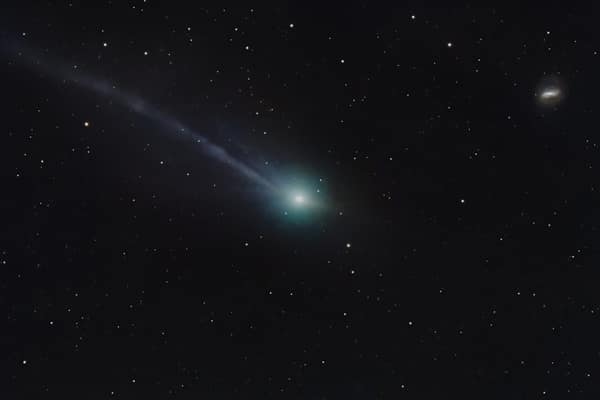The SpaceX chief has said that 3I/Atlas could “be alien” as it an unusual comet and Elon Musk warned that it could “obliterate a continent.”
Musk said that 3I/Atlas could “kill most of human life” and the interstellar object has baffled top Astrophysicists over the past months.
Physicist Dr Avi Loeb has said that 3I/Atlas could be an “alien mothership” UFO boffins believe the interstellar object could be trying to make contact with Earth.
Musk told the Joe Rogan Experience podcast that the object “could be alien, I don’t know,” however it is an unusual comet.
The tech billionaire warned that 3I/Atlas poses a collision risk with Earth should it deviates from its current trajectory and said that space chiefs must monitor the object.
Read more related news:
Scientist believes 3I/Atlas ‘acceleration might be the technological signature of an internal engine’
The SpaceX boss warned that should the interstellar object hit Earth this “would like obliterate a continent type of thing,” Musk added, “Maybe worse. Probably kill most of human life. If not all of us.”
Professor Loeb has said ‘an3I/Atlas has “anomalies” which suggests it “might” be an alien spaceship.
Mark Christopher Lee who is a documentary film-maker said it could make first contact with Earth this Christmas.
He said, “These are weird times and we’ve always looked to the stars for guidance – and we need guidance now in 2025.
“The UFOlogist in me sees 3I/ATLAS’s Earth flyby just before Christmas as no coincidence.” We could detect signals or course changes by December 19 to 25. They’re centralising contact authority just as the world watches.”
Dr Loeb wrote in a post on Medium saying, “Alternatively, the non-gravitational acceleration might be the technological signature of an internal engine.
“This might also explain the report on 3I/ATLAS getting bluer than the Sun. For a natural comet this blue colour is very surprising.
“Dust is expected to redden the scattered sunlight, and the surface of 3I/ATLAS is expected to be ~20 times colder than the 5,800 degrees Kelvin at the photosphere of the Sun, resulting in it having a redder colour than the Sun. The blue appearance at perihelion is a ninth anomaly in the list of unexpected properties of 3I/ATLAS.
“It could potentially be explained by a hot engine or a source of artificial light. However, it might instead be a signature of ionised carbon monoxide for a natural comet.”
On 19 December 3I/Atlas will be at its closest point to Earth, this will enable observatories and telescopes to see a better view of the interstellar object.








